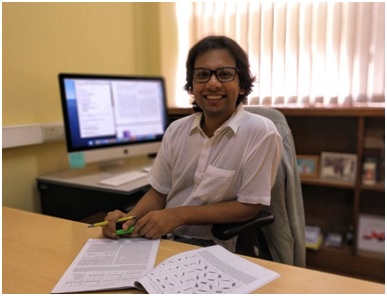
Scientists may soon find a clue to how stars explode due to neutrinos, one of the most abundant particles in the universe.
These sub atomic particles are extremely difficult to detect because of their limited interactions with matter. However, they are very important to the study of supernovas or powerful luminous stellar explosions, because they power the explosion and provide an early warning signal that allows scientists to look in the right direction before the supernova explosion takes place.
Basudeb Dasgupta, Associate Professor in the Department of Theoretical Physics Tata Institute of Fundamental Research atMumbai, is one of the 21 recipients of this year’s Swarnajayanti Fellowship of the Department of Science and Technology (DST) who aims to understand thebasicphysics of how the quantum state of the neutrino evolves, the astrophysics of how neutrinos affect the exploding star, and how we can experimentally detect these neutrinos and decode the information they carry withthem.His work published in the journal ‘Physical review D’focuses specifically on the effect of so-called fast flavor conversions, which occur at a rate proportional to the neutrino density in the star and affects each of these three issues.
Dr. Dasgupta has played a leading role in understanding collective neutrino oscillations in dense astrophysical environments. He and his students identified a simple model that shows these faster oscillations and proved that it is almost identical to a much simpler problem that can be solved exactly-- a ball rolling down a hill whose slope increases as the cube of the horizontal distance travelled. They have also shown how these oscillations lead to mixing of all the neutrinos, which may have major consequences for how neutrinos deposit heat inside a supernova. Upcoming experiments may be able to probe their theory and shed light on the almost century old conundrum-- how do stars explode?
Dasgupta has also made insightful contributions towards identifying the particle nature of dark matter. This includes theoretical ideas as well as experimental strategies to test the ideas. His most recent works present remarkable neutrino and positron-based constraints that disfavor the possibility that minuscule black holes from the Big Bang may contribute significantly to the still unidentified dark matter.
His work has had a palpable impact, and last year he was awarded the prestigious International Centre for Theoretical Physics Prize, in honor of Subrahmanyan Chandrasekhar, by the Abdus Salam International Center for Theoretical Physics in Trieste.
He says that he is looking forward to the research grant that will enable him to buy new computers for their upcoming research projects that will require significant computing power.
Publication link:https://doi.org/10.1103/PhysRevD.97.023017
For more details Basudeb Dasgupta (basudeb[at]gmail[dot]com) can be contacted.






























